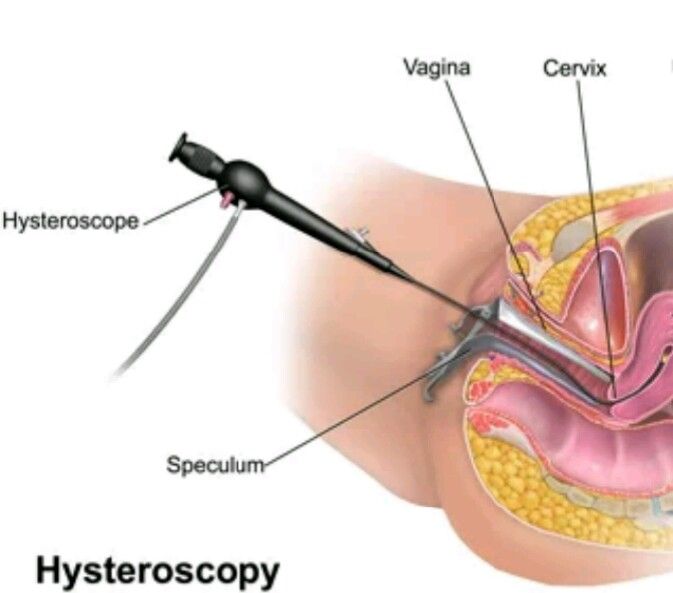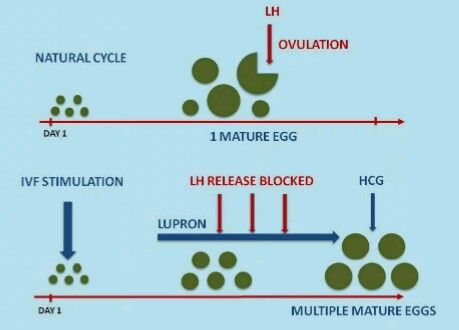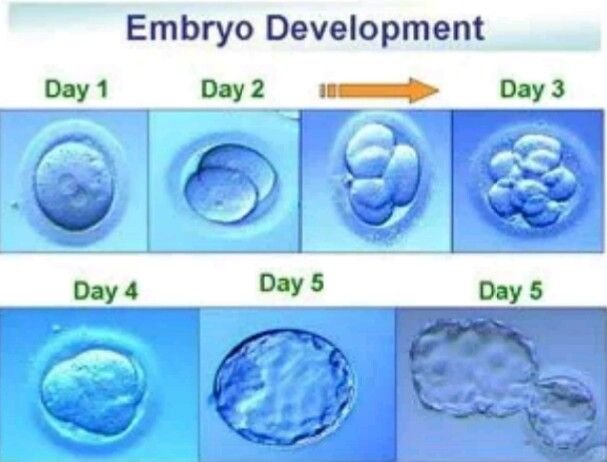IVF AND TEST TUBE BABIES, ALL YOU NEED TO KNOW.
 Credit
Credit
In Vitro Fertilization is one of the assisted reproductive techniques invented to help out people with fertility issues. It is a series of medical procedures that involves the removal of a woman’s ovum or egg from the ovary and fertilized by a sperm in a test tube or anywhere else apart from the body, could even be a petri-dish. The fertilized ovum forms a zygote or embryo which is placed back into the uterus for further development.
The products of IVF procedure are usually what we refer to as ‘test-tube’ babies, the first ever test-tube baby was Louise Joy Brown. It is important to note that not all the babies conceived through IVF were conceived in a test-tube as some of them were also conceived in a petri-dish much like our first ever test-tube baby, Louise who was born on the 25th July, 1978 with the IVF procedure carried out by Patrick Steptoe and Robert Edwards.
PRE-SCREENING TESTS FOR IVF PROCEDURE.
Hysteroscopy: This is one important test to carry out before the IVF procedure. This test involves checking the state of the woman’s womb to know if it is healthy or not. It involves sedating the patient and then a narrow tube known as a hysteroscope is passed through the vagina and cervix into the uterus, the tube being used usually has a telescope which serves as a guideline for the physician performing the test. The images are viewed and recorded on a screen, after which they are analyzed and scanned for any abnormality that could hamper the chances of success of the IVF procedure.
 Credit
Credit
Antral Follicle Test (AFT): The success rate of the IVF procedure is highly dependent on the number of ovum or eggs present in the woman’s ovarian reserve and that is exactly what this test does. With the help of an ultrasound, the physician is able to measure the woman’s ovarian reserve and the egg supply she has left after her last cycle. The antral follicles contain premature eggs and this test is usually carried out on cycle days 2, 3 and 5. The higher the amount of follicles counted, the higher the success rate, this is because the number of follicles in a woman’s ovaries can provide the physician with the estimated amount of premature eggs that can be stimulated leading up to a successful IVF, this test is very essential because it aids the physician in planning a medication schedule suited just for the woman.
Clomid challenge test: It is also known as Clomiphene Citrate Challenge Test (CCCT): This test is quite rare, it is not always carried out probably because theories of the clomid drug being one of the causes of ovarian cancer have been put forward. This test makes use of clomid which is a fertility drug and it is based on the Follicle Stimulating Hormone (FSH), it is usually conducted if a woman’s FSH is high or when the Estradiol level is greater than 65, the woman takes about 100mg of the drug on cycle days 5 and 9. A poor or low clomid challenge test simply shows that chances of a successful IVF procedure is quite low, it also shows that the woman in question will have a low egg retrieval and miscarriage could also occur.
Luteinizing Hormone (LH): This test is also very important as it helps to infer or inquire if a woman is ovulating and if her cycle is regular. The LH level is usually measured on days 2, 3 and 5 of the woman’s menstrual cycle.
Semen analysis: This is a test to consider for IVF pertaining to males. It is a test that involves analyzing the sperm content of the semen. Factors to take into consideration here are:
Motility of the sperm
Number of sperm
Morphology of the sperm
Concentration of the sperm.
 Credit
Credit
PROCEDURE FOR INVITRO FERTILIZATION.
Pre-screening tests: The first step in the IVF procedure is to carry out pre-screening tests as mentioned above, this would enable the physician ascertain if the woman is fertile and healthy enough for the procedure to avoid complications that may arise, this would ensure that the woman meets all the necessary criteria before the procedure is fully commenced.
Stimulation phase: In this phase, the physician monitors the woman’s period cycle and plans a specific treatment programme directed to suit the woman’s needs. The physician uses an ultrasound to observe the follicular response to know the drugs to be prescribed for the stimulation phase. For the successful IVF procedure, the ovaries need to produce more eggs than they normally do. Due to this reason, the physician prescribes certain medications to stimulate the ovaries to produce more eggs, this phase usually takes about 8-14 days, it is made possible with the use of these medications:
Gonadotropins: Administered to stimulate the growth of ovarian follicle
Drugs to prevent increase in LH to ensure that the oocytes do not get released into the fallopian tube.
Human Chorionic Gonadotropin (HCG): Stimulates the final maturation of the oocytes.
This phase is dependent on the fact that a slightly increased FSH levels promotes the development of dominant follicles, once the dominant follicles have been determined, a trigger shot is injected to finalize the maturation process, this shot mostly contains FSH.
 Credit
Credit
Egg retrieval: This occurs at exactly 36 hours after the trigger shot has been injected, it is the process of taking out the eggs out from a woman hence the name ‘egg retrieval’. The woman is first put under light sedation after which an ultra sound probe is gently inserted into the vagina to carefully observe the positions of the ovary, with the help of an egg retrieval needle, the eggs are then aspirated from the follicles using light suction. About 10-20 eggs are obtained, the physician moves from one follicle to the other and aspirates the eggs from them. It is important to note that before the egg retrieval procedure, the woman is asked to fast due to the light sedation she would be put under.
 Credit
Credit
Sperm retrieval: Whether gotten from sperm banks or freshly collected from the partner, sperms are collected through masturbation, it’s always advisable for the sperm to be freshly ejaculated on the day of egg retrieval. Prior to this process, the male is asked not to ejaculate for about 3 days. The sperm is then analyzed for quality.
Fertilization: This is one of the most important procedure and care must be taken to avoid mistakes. The eggs are placed in a culture medium and the sperms are injected into the culture medium making each egg to be surrounded by actively swimming sperms.
 Credit
Credit
After this they are placed in an incubator for the main fertilization process to kickoff. It starts with the appearance of two bodies in the center of the egg, these bodies are known as pronuclei, the female pronuclei is slightly smaller than that of the male. The first egg cleaves to give two embryos, after some hours it undergoes further cleavage to about four embryos, it continues like that for about three days when the cleavage totals to about 8 or 9 embryos. To summarize the fertilization process, it has three main stages:
The cleavage stage: This is normal cleavage as we know it, here the cells divide to form embryos, each day of fertilization has an estimated amount of embryo to be expected. For example on the first day, about 2 embryos should be formed.
Morula stage; This is the stage of fertilization where cleavage has occurred and the cells have reached an uncountable number.
Blastocyst stage: This is when the embryos are developed enough to be implanted into the uterus.
 Credit
Credit
Embryo Analysis: This can be done using the pre-implantation genetic diagnosis, a sample collected from the embryo and subjected to a genetic test, some of these tests involve checking the chromosomal amount of the embryo and some other criteria to check how viable the embryo is.
In the absence of this genetic diagnosis, some other methods have also proved helpful;
Counting; The physician or embryologist counts the number of embryos formed on each day of fertilization, an estimate is expected so when a particular egg is lagging behind, you can easily know the outcome.
Fragmentation: During this cell division, fragments are deposited behind, it is quite normal but when the deposited fragments are too much, then a problem is detected.
So far, the genetic diagnosis has proved to be better due to its accuracy.
Transfer of embryos: This involves placing the selected embryos into the uterus of the woman, it is carried out using the guidance of an ultrasound to know the appropriate positions of the inner structures and then a fine catheter containing embryos is passed through the cervix and the vagina and placed in the uterus, this process does not require the use of anesthesia. A definite number of embryo to be transferred is not certain yet but usually more than one is implanted in the uterus to increase the chances of success if one fails to develop but at the same time care is being taken to avoid the risk of multiple pregnancies. Also, in older women lesser amount of embryos are implanted. Experts say that about 3-4 embryos can be implanted. After this process, some physicians prescribe progesterone drugs to aid the chance of pregnancy and to sustain it.
 Credit
Credit
After about 2weeks, if the implantation was successful, pregnancy should be confirmed.
SIDE EFFECTS DURING THE PROCESS.
Stimulation Phase:
Ovarian stimulation, Depression and mood swings, Breast tenderness, allergic reactions where the trigger injection was injected.
Egg retrieval
Abdominal cramps, vaginal soreness.
WHEN TO CONSIDER IN VITRO FERTILIZATION.
Fallopian tube damage or blockage: This is due to an obstruction in the fallopian tube that stops the egg from reaching the uterus, thereby preventing fertilization by the sperm.
Hysterectomy: This simply means the removal of the uterus, could occur during abortion not carefully carried out, a woman who has undergone hysterectomy cannot bear a child but with IVF there is still a chance especially if she still has one or two of her ovaries. After the fertilization part of the IVF procedure, surrogacy comes in, the selected embryos are placed in the uterus of another woman.
Endometriosis: This occurs when the tissues found lining the uterus are found in other parts of the body, it could even get attached to the fallopian tube. Women who suffer from this usually resort to IVF.
Low sperm count: This pertains to men, for men that suffer infertility due to low sperm count, IVF becomes their savior through intracytoplasmic injection of sperm.
There are other infertility cases but these are just a few, as long as some eggs can be recovered from the ovaries and some substance can be collected from the epididymis of the man, the IVF procedure can be carried out.
RISKS ASSOCIATED WITH IN VITRO FERTILIZATION.
Ovarian Hyperstimulating Syndrome: Drugs like HCG cause hyperstimulating syndrome, it is one of the side effects witnessed in the stimulation phase characterized by abnormal enlargement of the ovaries, abdominal pain. Symptoms include, nausea, vomiting, diarrhea etc.
Ectopic pregnancy: Improper embryo transfer can result in ectopic pregnancy in which the embryo is not planted in the uterus and since the child cannot survive outside the uterus, miscarriage occurs.
Ovarian cancer: Research has shown that in rare cases, IVF procedure has been known to cause cancer, it has not been completely proven yet but studies show that this cancer may be due to the clomid drug used in the clomid challenge test.
Premature delivery: Situations could arise where premature babies are born due to IVF.
FACTORS THAT AFFECT IN VITRO FERTILIZATION.
Age: This mostly affects women because as women age, the chance of success at IVF decreases, the younger the better this is because, the egg quality and quantity of older woman is lower.
Cause of infertility: While some cases of infertility can be resolved by IVF, some other cases like damage to one or the two ovaries can greatly reduce the success rate of IVF.
Previous pregnancy: if there has been a previous pregnancy by the couple, the probability of the procedure working is high.
Lifestyle: Some lifestyle do not support IVF especially excessive intake of drugs, it could greatly hinder the success of drugs.
That’s all for IVF, so if you have fertility issues, chances are IVF would be a good option.
Thanks for this post
You are welcome sir
Amazing post. This is so detailed. now I know alot about IVF. Thanks!
Thanks a lot